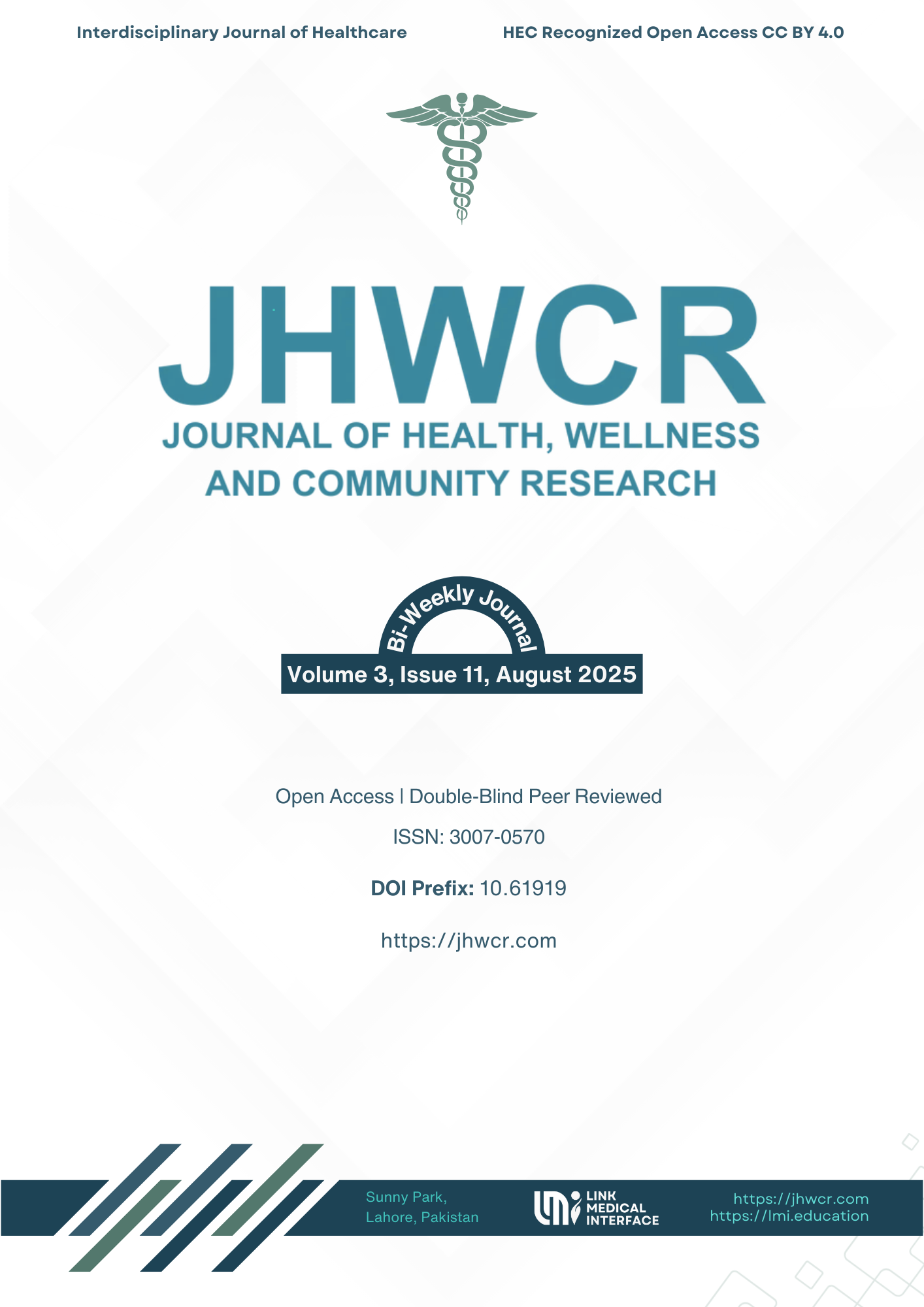Frequency of Patellofemoral Pain Syndrome Among Health Care Workers and Its Correlation With BMI
DOI:
https://doi.org/10.61919/ct6dk752Keywords:
patellofemoral pain syndrome, anterior knee pain, body mass index, healthcare workers, occupational healthAbstract
Background: Patellofemoral pain syndrome (PFPS) is a leading cause of anterior knee pain, frequently aggravated by occupational and recreational activities involving repetitive knee flexion under load. Healthcare workers may be at increased risk due to prolonged standing, stair climbing, and squatting during work, yet limited data exist on PFPS prevalence and its association with body mass index (BMI) in this population. Objective: To determine the prevalence of PFPS among healthcare workers in Lahore, Pakistan, and evaluate its correlation with BMI. Methods: In this observational cross-sectional study, 138 healthcare professionals aged 20–40 years from hospitals and pharmacies in Lahore were assessed using the Kujala score, SNAPPS questionnaire, Clarke’s test, and Numerical Pain Rating Scale. BMI was measured and categorized per WHO criteria. Data were analyzed with descriptive statistics and Pearson’s correlation, with p<0.05 considered significant. Results: PFPS prevalence was 29.7% (95% CI 22.1–38.1). Prevalence increased from 9.0% in normal-weight participants to 50.0% in overweight and 85.7% in obese individuals. Pearson’s correlation indicated a moderate positive association between BMI and PFPS (r=0.288, p<0.001). Conclusion: PFPS is common among healthcare workers and strongly associated with elevated BMI. Workplace prevention strategies should prioritize weight management and biomechanical risk reduction.
Downloads
Published
Issue
Section
License
Copyright (c) 2025 Komal Razzaq, Syeda Najaf Zahra, Hafsa Shafique, Mahrukh Munawar, Kinza Shahzad (Author)

This work is licensed under a Creative Commons Attribution 4.0 International License.


